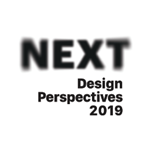
Inclusivity, sustainability, generational confrontation in a tech world, self-care and a new concept of home. The second edition of NEXT DESIGN PERSPECTIVES, conference by ALTAGAMMA, presented the new trends for design and creativity.
Gucci Hub, Milan, October 29, 2019. The second edition of NEXT DESIGN PERSPECTIVES, the design conference conceived by Altagamma today revealed six key trends that will have an impact on both people’s lifestyles and businesses.
WGSN, the international trend forecasters and data scientists who have been analysing and researching trends for over 20 years, presented the six key trends that include the need to revolutionise internal systems, how our consumption methods are developing, the changing nature of home, the effects of an aging population, a demand for inclusive design and the rise of digital craftsmanship.
Andrea Illy, Chairman of Altagamma, said: “The second edition of NEXT DESIGN PERSPECTIVES confirms itself as a moment of reflection on how to interpret necessary change in design thinking and strategy. We thank the Curator Deyan Sudjic, Director of the Museum of Design in London, for bringing together this group of important international speakers – academics, scientists, innovators and designers – who offered visitors new perspectives to imagine new evolutionary and regenerative paths”
6 KEY TRENDS FOR DESIGN AND CREATIVITY – SUMMARY
- THE AGE OF SYSTEMS
Designing better systems will become even more crucial than the design of the products themselves. We will move from product-focused design towards systemic design – for example, replacing linear supply chains with circular resource models. It is now time for brands to rethink internal systems to maximise long-term opportunities.
- THE END OF MORE
In the future, people will want access over ownership; instead of having more things, they will simply want their desires fulfilled. This shift will take the form of an immaterial economy based on emotions, experiences and knowledge. People will be looking for quality over quantity in their consumption, and finding different ways to do so, including the rental economy and resourceful essentials.
- THE HOME HUB
Our concept of home is changing, and so is what we do in both personal and public spaces. Home is becoming a key space for innovation, both for comfort and for community as consumers bring more activities into their immediate surroundings. The home is largely seen as a space for self-improvement, self-care, and community. Driven by the need for calm and comfort it will continue to be a growing market
- THE AGE GAP
There is an intergenerational clash. In some parts of the world, companies must take into account the increase in population longevity, while in other parts of the world, especially in emerging economies, the population is growing younger and brands need to know how to address the opportunities that these generations represent.
- INCLUSIVE NETWORKS
Design for all will ramp up in 2021, as universal design strategies are adopted by governments, institutes and brands alike. As consumer demand for inclusive design grows, diversity will be recognised and celebrated across a fuller spectrum.
- DIGITAL CRAFTSMANSHIP
Going forward, product-less stores will provide a more immersive and engaging shopping journey, while digital-only clothing and interiors unlock limitless creativity for the next generation of designers. Purpose-driven Gen Z and Millennials will also embrace the idea of digital design as it presents a new opportunity to tackle the desire for newness while creating more sustainable design systems.
